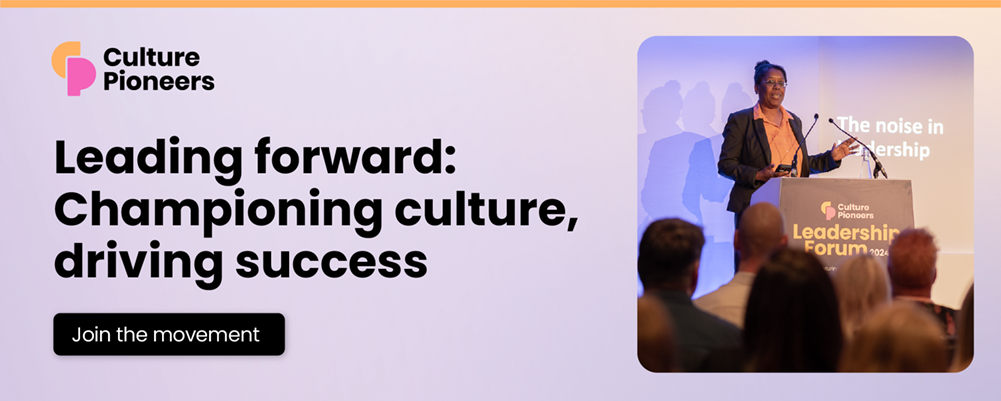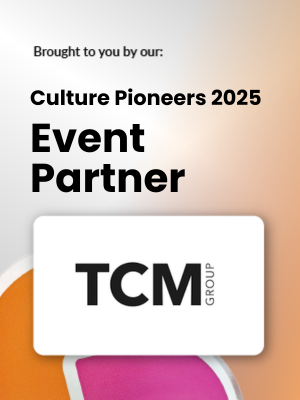Today’s prevailing HR operating models remain focused on risk mitigation, control, and retribution. But in the modern workplace, is this system holding your organisation back? And if so, what’s the alternative?
With over 20 years’ experience working closely with HR leaders on mediation and conflict resolution, David Liddle, CEO of The TCM Group, has developed a new path forward for HR in 2026 and beyond.
By transforming your HR team into a People and Culture function – where the focus shifts away from restrictive HR processes and policies towards compassion, dialogue, and fairness – you can become a trusted, strategic player equipped to build a high-performing workplace.
In this Culture Pioneers conversation, David shares the details of this radical shift towards people and culture: why it’s so desperately needed, what it looks like in practice, and how pioneering people leaders are already adopting it. He also reveals the pivotal moment he realised the current system was broken – and how a giant paper shredder sparked change.
Whether you’re a Chief People Officer, HR leader, or culture champion, this conversation will challenge how you think about your role – and inspire you to reclaim it.
Watch the full interview below.
A little more about David Liddle…
David is an inspiring, engaging and entertaining keynote speaker, workshop facilitator and podcast guest. He is a globally renowned authority in the fields of mediation, conflict management, coaching, human resources, people & culture, culture change, leadership and organisational development (OD). In 2025, David was recognised as HR’s most influential thinker by HR Magazine, and he is a member of the prestigious Thinkers 50 Radar. He is the author of two highly acclaimed books, and is working on two more. We explore one of his new books, People and Culture, in this discussion (due to be released on 3rd January 2026 and available to pre-order now).
Key discussion points
Outdated and ineffective HR models
- David discusses the outdated nature of existing HR systems and processes, which were designed for a control-based organisational structure.
- He explains that many HR processes are focused on risk mitigation rather than enabling high-performing relationships.
- David highlights the retributive nature of HR systems, which often lead to blame, punishment, and sanctions.
- He emphasises the need for a shift towards compassion, dialogue, engagement, insight, learning, and fairness in HR processes.
A personal moment of change (involving a giant paper shredder)
- David shares his background in mediation, restorative justice, and anti-racism, leading to his work in conflict resolution in workplaces.
- He describes his initial experience in 2001 as woeful and inadequate, with HR systems avoiding or overreacting to conflicts.
- David recounts a pivotal moment in 2013 when he shredded a grievance procedure to highlight its ineffectiveness and promote a resolution framework.
- This moment marked a shift in his career from being a corporate band-aid to having strategic conversations with leadership about organisational culture.
Introduction to the People and Culture Operating Model
- David outlines the five domains of the People and Culture operating model: People, Culture, Strategy, Justice, and Value.
- The People domain focuses on creating people-centered workplaces, emphasising engagement, proactive listening, and servant leadership.
- The Culture domain involves co-creating culture with intentionality and deliberateness, chaired by the Chief People Officer and CEO.
- The Strategy domain aligns corporate strategy with the people plan, making culture and people the top strategic priority.
The Justice and Value Domains
- The Justice domain introduces a modern form of transformative justice, blending restorative justice with procedural, distributive, and natural justice.
- David emphasises the importance of understanding justice and delivering it through dialogue, insight, and learning rather than retribution.
- The Value domain shifts from traditional value chains to strategic value, stakeholder value, and social value, focusing on measuring and driving value as people leaders.
- David discusses the role of the people function in creating new centers of excellence, upgrading outdated ones, and focusing on core topics like resolution, wellbeing, and inclusion.
Common traits among pioneering people leaders
- David shares examples of successful people leaders who are already implementing the People and Culture operating model.
- David highlights the commonalities among successful people leaders, including using values as a golden thread, connecting values to behaviors and capabilities, and building trust in the people function.
Practical steps for implementing change
- David suggests creating a culture hub, chaired by the Chief People Officer and CEO, to drive organisational culture.
- He advises gathering data to identify areas for improvement and using cultural audits and maturity indicators.
- David introduces the green pen, red pen experiment, encouraging people professionals to balance empathy and dialogue with formal, rigid processes in HR policies.
- He emphasises the importance of having collaborative conversations with various stakeholders, including managers, employees, and unions, to recalibrate HR policies.
Call to action
- David highlights the strategic role of the people function in creating high-performing, innovative, and productive workplaces.
- He concludes by encouraging listeners to pre-order his book, People and Culture and to stay tuned for his upcoming initiative, The People Leader.
The TCM Group is the proud Event Partner of Culture Pioneers – a campaign to both support organisations driving impactful culture change, and commend those who are leading forward and challenging the status quo at work.








